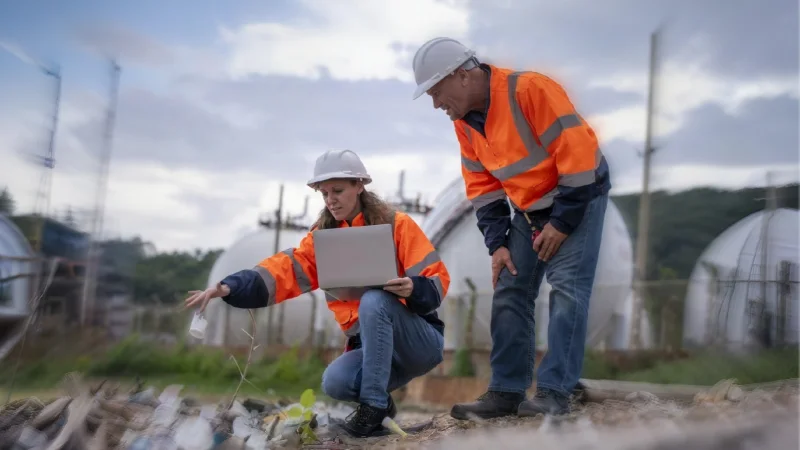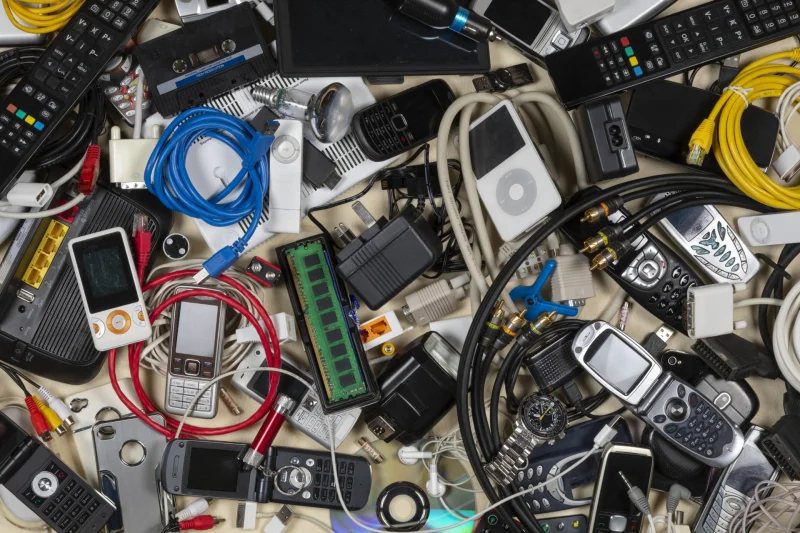What Are Household Hazardous and Electronic Waste Programs?

In today’s world, the awareness surrounding waste disposal has grown significantly, as people have become more conscious of the environmental and health risks posed by improper waste management. For more information on how to safely recycle your e-waste, check out https://www.techwasterecycling.com, a service dedicated to the responsible recycling and disposal of electronic waste. Among the most harmful types of waste are household hazardous waste (HHW) and electronic waste (e-waste). Many communities have implemented Household Hazardous and Electronic Waste Programs to safely manage these types of waste, reduce their environmental impact, and protect human health. In this article, we’ll explore what these programs are, why they are necessary, and how they contribute to sustainable waste management practices.
Understanding Household Hazardous Waste (HHW)
Household hazardous waste refers to products that are commonly found in homes and that contain chemicals or materials that are harmful to human health or the environment. These materials can be corrosive, toxic, flammable, or reactive, and they often come from cleaning products, paints, batteries, pesticides, and automotive products.
Some examples of household hazardous waste include:
- Paints and paint thinners
- Batteries (alkaline, rechargeable, and car batteries)
- Pesticides and herbicides
- Household cleaning products (like bleach and ammonia)
- Used motor oil
- Fluorescent light bulbs
- Old medicine
If disposed of incorrectly, household hazardous waste can pose significant risks. When poured down the drain or thrown in the trash, these substances can contaminate water supplies, harm wildlife, or cause fires and explosions. Additionally, exposure to hazardous materials can lead to severe health issues, including skin irritation, poisoning, or even cancer.
What Is Electronic Waste (E-Waste)?
Electronic waste (e-waste) refers to discarded electrical or electronic devices that are no longer in use. As technology continues to advance rapidly, consumers regularly replace their old devices with new ones, leading to a significant amount of e-waste. This includes discarded items like old computers, cell phones, televisions, printers, and other electronic gadgets.
Common examples of e-waste include:
- Old mobile phones
- Computers and laptops
- Televisions and monitors
- Printers and fax machines
- DVD players and video game consoles
- Household appliances like refrigerators, microwaves, and toasters
E-waste is a growing concern because many electronics contain hazardous materials, such as lead, mercury, cadmium, and brominated flame retardants, which are dangerous to the environment and human health when not disposed of properly. If left untreated, e-waste can leak harmful substances into soil and water, leading to pollution and health risks for communities.

Household Hazardous and Electronic Waste Programs: What Are They?
Household Hazardous and Electronic Waste Programs are government or community-led initiatives designed to provide safe disposal and recycling options for hazardous materials found in homes. These programs are often managed by local municipalities, waste management companies, or nonprofit organizations, with the goal of protecting public health and the environment from the risks posed by improper disposal.
These programs typically provide various services, such as:
- Collection events: Local communities often organize collection days where residents can drop off their hazardous or electronic waste for safe disposal.
- Drop-off centers: Many municipalities set up permanent drop-off locations where people can safely dispose of hazardous household items and e-waste year-round.
- Recycling programs: Some programs focus on recycling e-waste by recovering valuable materials, such as precious metals (gold, silver, copper), rare earth elements, and plastics, which can be reused in new products.
- Public education: These programs often include educational campaigns that raise awareness about the dangers of improper waste disposal and teach people how to dispose of hazardous materials responsibly.
Why Are Household Hazardous and Electronic Waste Programs Important?
- Protecting Human Health: Improper disposal of household hazardous waste can lead to direct exposure to toxic chemicals, posing serious health risks, such as respiratory problems, poisoning, and even cancer. E-waste contains hazardous materials that, if not properly handled, can harm people, especially those in developing countries where informal recycling processes are common.
- Preventing Environmental Pollution: Hazardous materials from household waste and e-waste can contaminate the environment, particularly soil and water. Chemicals like mercury and lead can leach into the ground, entering the food chain and affecting wildlife and plants. Safe disposal programs ensure that these pollutants do not find their way into natural ecosystems.
- Promoting Recycling and Reuse: Many electronic products contain valuable metals, plastics, and components that can be recycled and reused. Household Hazardous and Electronic Waste Programs help divert these materials from landfills and incinerators, contributing to the circular economy and reducing the need for raw material extraction. This also reduces the carbon footprint associated with manufacturing new products.
- Compliance with Regulations: In many countries, the improper disposal of hazardous waste and e-waste is illegal. Household Hazardous and Electronic Waste Programs ensure that people can easily comply with these regulations and avoid penalties associated with illegal disposal.
- Reducing Landfill Overload: Both HHW and e-waste contribute to landfill overpopulation. By encouraging responsible disposal, these programs help reduce the amount of waste that ends up in landfills, which is crucial for extending the lifespan of waste disposal facilities.
How Can You Participate in These Programs?
If you are looking to dispose of household hazardous waste or electronic items, here are some ways you can participate in these programs:
- Find local collection events: Many local governments organize annual or quarterly hazardous waste collection days, where you can drop off items for free.
- Locate drop-off centers: Search for nearby drop-off centers in your area where you can dispose of household hazardous materials and e-waste safely.
- Check with retailers: Some retailers offer e-waste recycling services, such as taking back old electronics when purchasing new devices.
- Take part in education campaigns: Stay informed about what can and cannot be recycled or safely disposed of by attending community education events or reading local waste management guidelines.
Household hazardous and electronic waste programs are vital for reducing the environmental and health risks posed by improper waste disposal. They offer individuals a safe and responsible way to dispose of potentially dangerous materials while promoting recycling and sustainability. By participating in these programs, you contribute to a healthier, cleaner, and more sustainable environment for present and future generations. Always remember that proper disposal is not just a responsibility but a way to protect the planet.
Ti potrebbe interessare:
Segui guruhitech su:
- Google News: bit.ly/gurugooglenews
- Telegram: t.me/guruhitech
- X (Twitter): x.com/guruhitech1
- Bluesky: bsky.app/profile/guruhitech.bsky.social
- GETTR: gettr.com/user/guruhitech
- Rumble: rumble.com/user/guruhitech
- VKontakte: vk.com/guruhitech
- MeWe: mewe.com/i/guruhitech
- Skype: live:.cid.d4cf3836b772da8a
- WhatsApp: bit.ly/whatsappguruhitech
Esprimi il tuo parere!
Ti è stato utile questo articolo? Lascia un commento nell’apposita sezione che trovi più in basso e se ti va, iscriviti alla newsletter.
Per qualsiasi domanda, informazione o assistenza nel mondo della tecnologia, puoi inviare una email all’indirizzo [email protected].
Scopri di più da GuruHiTech
Abbonati per ricevere gli ultimi articoli inviati alla tua e-mail.
